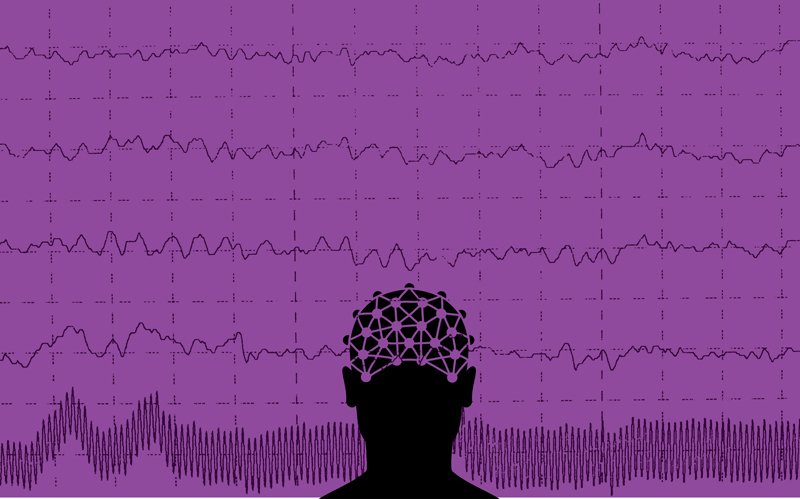
Overview
The risk of premature death in people with epilepsy is two to three times higher than for the general population in high-income countries and more than six times higher in low- and middle-income countries. People with epilepsy also often suffer from other psychological conditions, such as depression and anxiety, associated intellectual disabilities, especially in children, and physical injuries (for instance, fractures and burns).

People with epilepsy are often subjected to stigmatisation and discrimination because of misconceptions and negative attitudes surrounding the disease. Some common misconceptions associated with the disease are that the patient is possessed by ‘evil spirits’ or that epilepsy is contagious or is equivalent to madness. Stigmatisation leads to human rights violations and societal exclusion. For example, in some settings children with epilepsy may not be allowed to go to school and adults may not find suitable employment or be able to marry.
Challenges and gaps in epilepsy care
Up to 75% of people with epilepsy can live a normal life, free from seizures, if they are appropriately treated with antiepileptic medicines.
Despite the availability of affordable treatment, up to 90% of people with epilepsy may not be properly diagnosed or treated in resource-poor settings. The so-called “treatment gap” (the percentage of people with epilepsy whose seizures are not being appropriately treated at a given point in time) is estimated to be 75% in low-income countries and substantially higher in rural areas than in urban areas.
The wide treatment gap may result from a combination of inadequate capacities of healthcare systems and inequitable distributions of resources, particularly in resource-poor and rural areas. Factors that widen the gap include an insufficiency of staff, poor access to antiepileptic medicines, societal ignorance and misconceptions, poverty and low prioritisation for the treatment of epilepsy.

Only limited numbers of specialist health professionals are available in low- and middle-income countries. Epilepsy can be treated at the primary healthcare level but very often, the healthcare workers there are not adequately trained to diagnose or treat epilepsy.
There are several barriers to accessing antiepileptic medicines. For example, the price often remains unjustifiably high, even for generic medicines. Data and information necessary for planning, forecasting and budgeting are often lacking. Certain regulatory policies prevent wider use of some antiepileptic medicines.
Lack of knowledge or misperceptions about epilepsy may affect health-seeking behaviour. People with epilepsy may not access treatment from healthcare facilities and instead might seek help from other sources that may be ineffective. They also may not seek regular follow-up care or adhere to medications as prescribed.
Epilepsy care: Need of the hour
Strengthen effective leadership and governance: National policies and legislation need to be formulated, strengthened and implemented in order to promote and protect the rights of people with epilepsy and to prohibit discrimination in education, employment, marriage, reproduction, driving regulations and recreation.
Improve provision of epilepsy care: Policies on general health, mental health or non-communicable diseases should include consideration of care for people with epilepsy and adequate budgets should be allocated to undertake the necessary steps. Stakeholders from all relevant sectors, including people with epilepsy and their caretakers and family members, should be engaged in the development and implementation of policies, laws and services.
Integrate epilepsy management into primary healthcare: In order to help reduce the epilepsy treatment gap, non-specialist healthcare providers should be trained and supported so that epilepsy can be diagnosed and treated in primary healthcare settings.
Increase access to medicines: Strategies should be formulated and implemented to make antiepileptic medicines more available, accessible and affordable
Support strategies for prevention of epilepsy: Many of the causes of epilepsy in low- and middle-income countries are preventable, and the health and social sectors should be supported to assist in reducing its incidence. Examples include promoting safe pregnancies and births, control of cysticercosis, prevention of head trauma and prevention of strokes.
Strengthen health information and surveillance systems: Data on epilepsy should be captured, collated, routinely reported, analysed and disaggregated by sex and age in order to measure progress in increasing access to services for people with epilepsy.
Improve investment in epilepsy research and increase research capacity.
Collaborate with civil society and other partners.
Published in The Express Tribune, Sunday Magazine, February 8th, 2015.



1719319701-0/BeFunky-collage-(10)1719319701-0-165x106.webp)









1732012115-0/Untitled-design-(14)1732012115-0-270x192.webp)
1734946202-0/Express-Tribune-(6)1734946202-0-270x192.webp)

1734899716-0/image-(15)1734899716-0-270x192.webp)






COMMENTS
Comments are moderated and generally will be posted if they are on-topic and not abusive.
For more information, please see our Comments FAQ